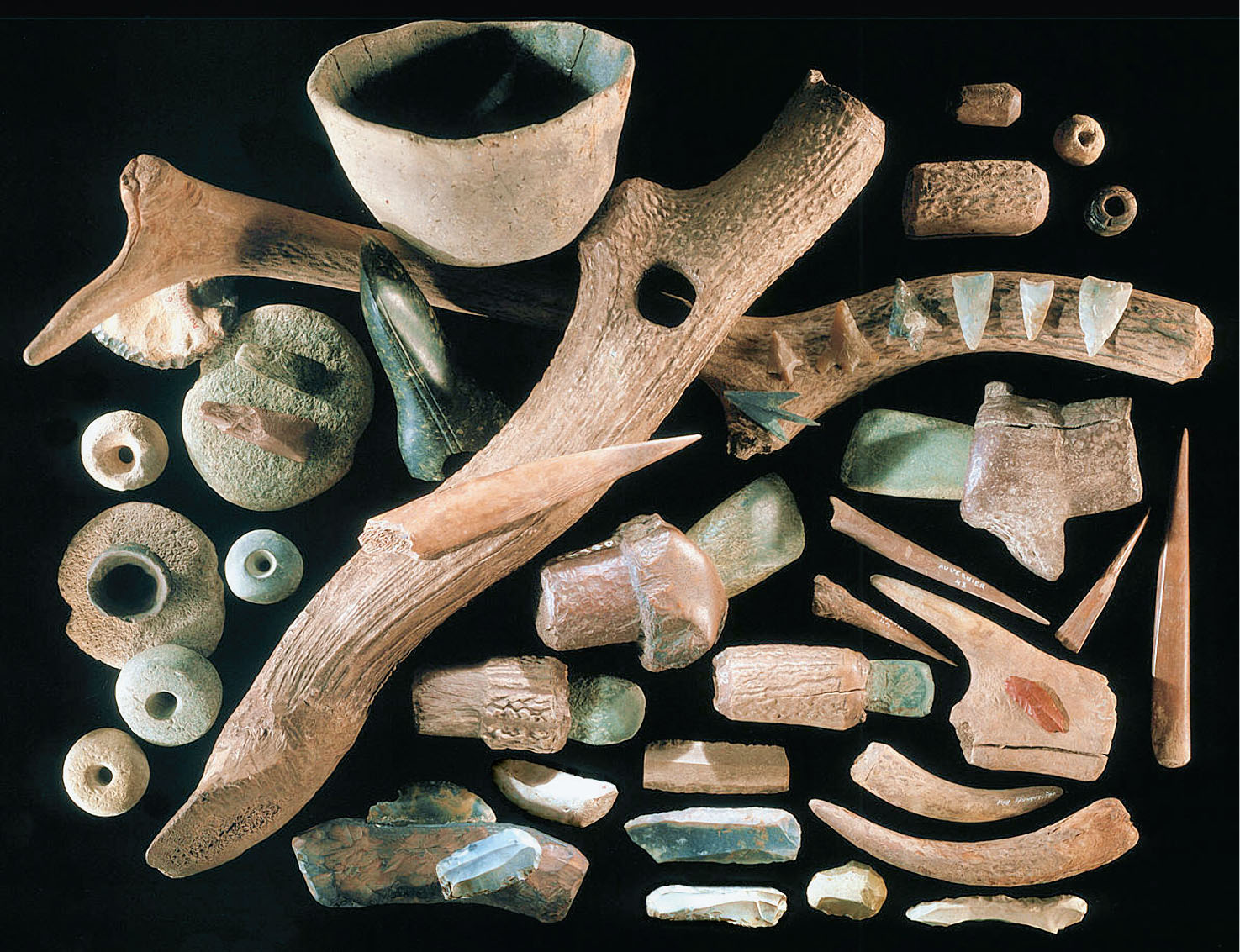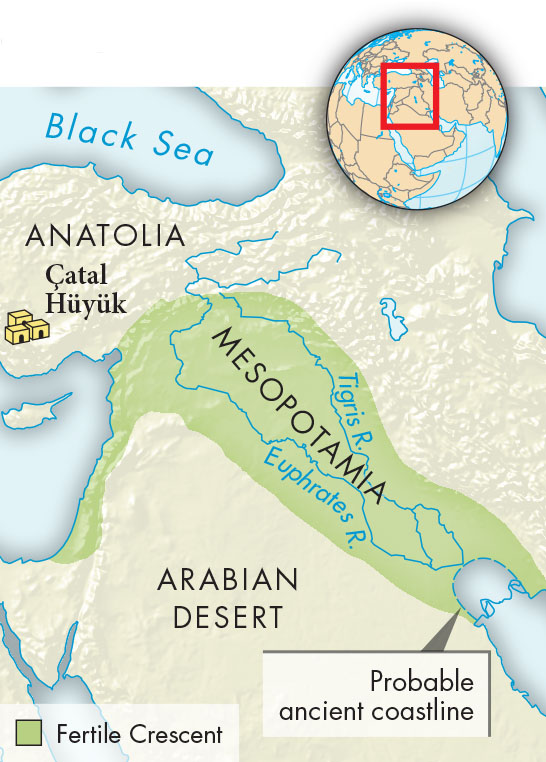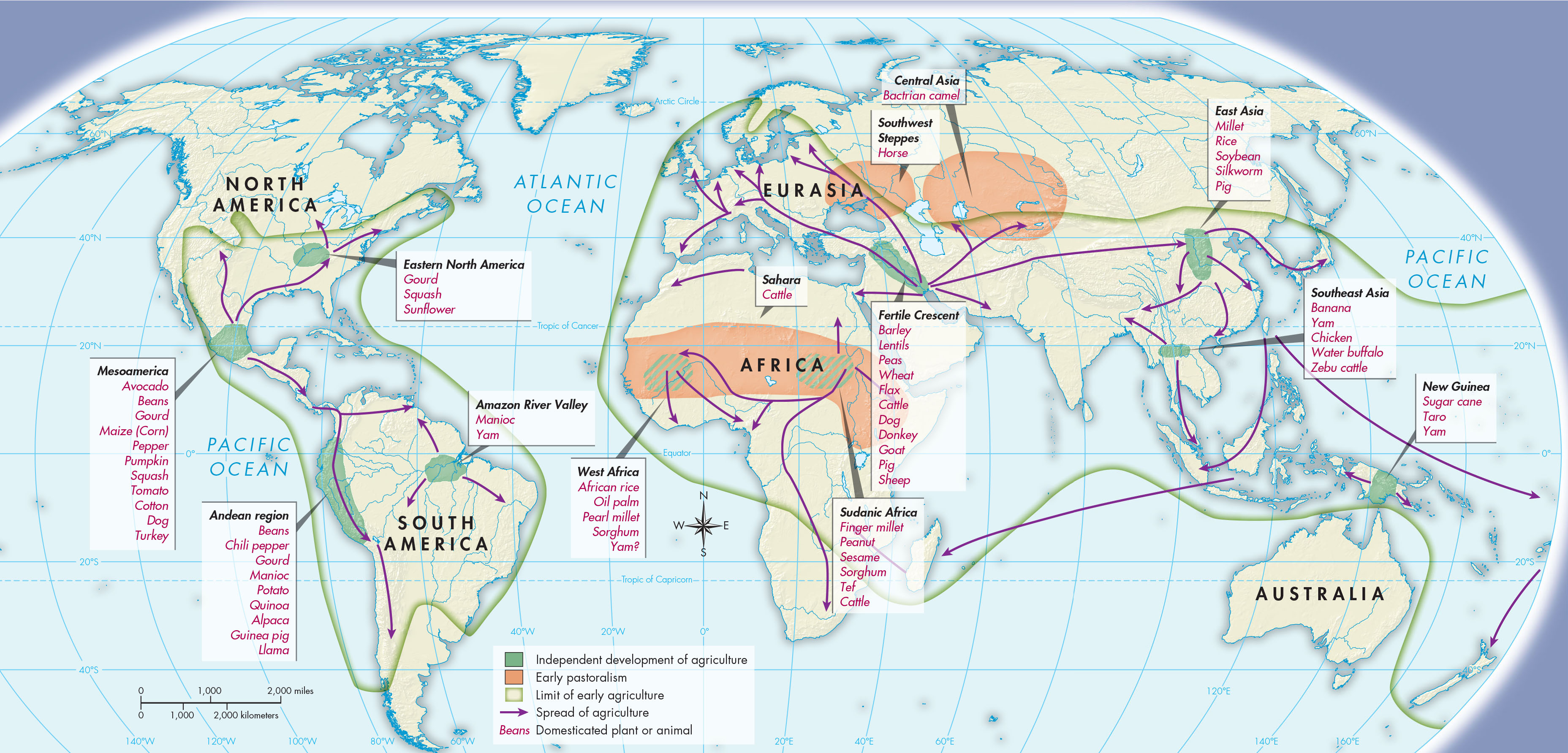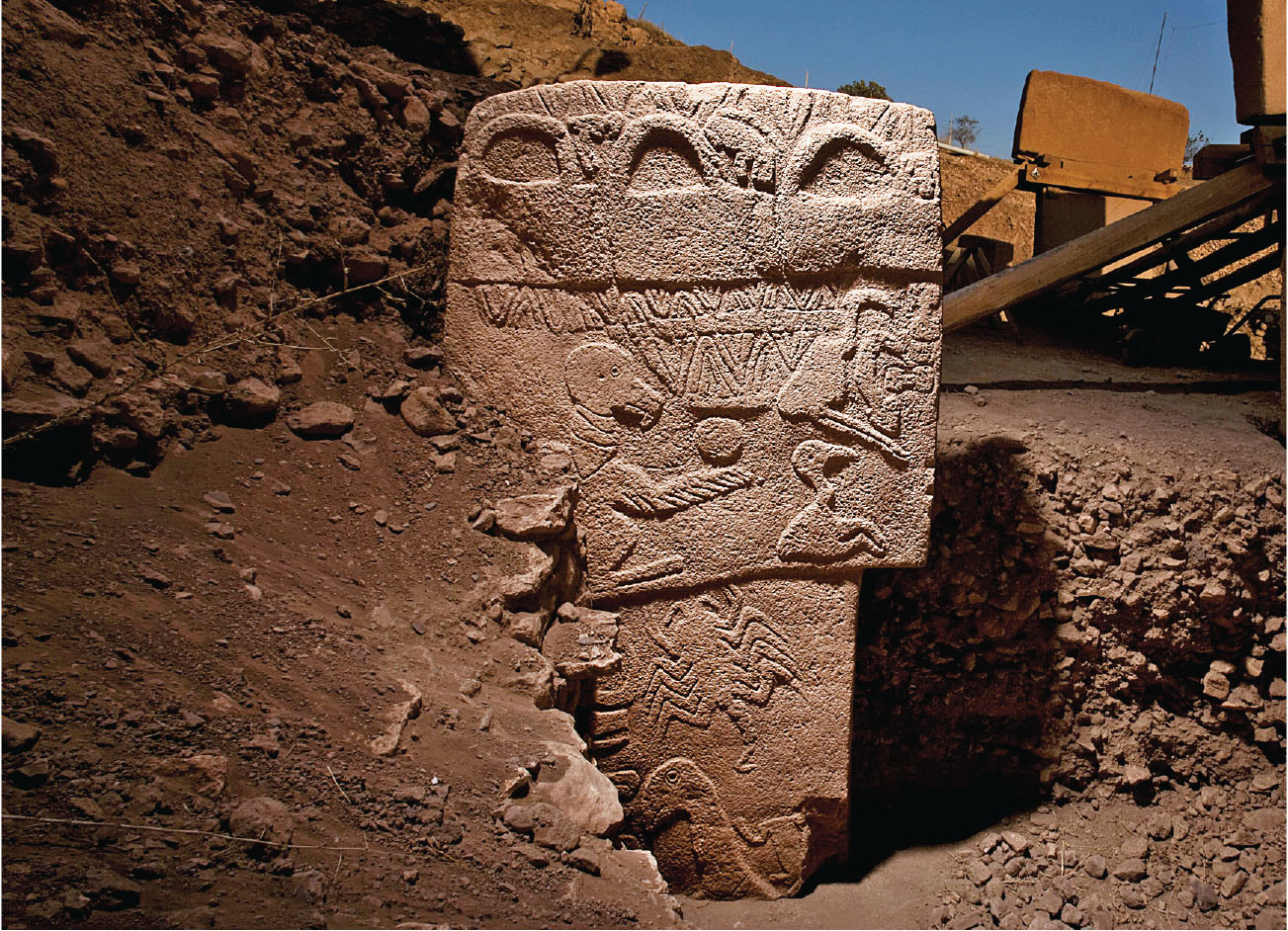The Development of Horticulture
Areas of the world differed in the food resources available to foragers. In some, acquiring enough food to sustain a group was difficult, and groups had to move constantly. In others, moderate temperatures and abundant rainfall allowed for verdant plant growth; or seas, rivers, and lakes provided substantial amounts of fish and shellfish. Groups in such areas were able to become more settled. About 15,000 years ago, the earth’s climate entered a warming phase, and the glaciers began to retreat. As the earth became warmer, the climate became wetter, and more parts of the world were able to support sedentary or semi-

In several of these places, foragers began planting seeds in the ground along with gathering wild grains, roots, and other foodstuffs. By observation, they learned the optimum times and places for planting. They removed unwanted plants through weeding and selected the seeds they planted in order to get crops that had favorable characteristics, such as larger edible parts. For grain crops, people chose plants with larger kernels clustered together that ripened all at one time and did not just fall on the ground, qualities that made harvesting more efficient. Through this human intervention, certain crops became domesticated, that is, modified by selective breeding so as to serve human needs, in this case to provide a more reliable source of food. Archaeologists trace the development and spread of plant raising by noting when the seeds and other plant parts they discover show evidence of domestication.

This early crop planting was done by individuals using hoes and digging sticks, and it is often termed horticulture to distinguish it from the later agriculture using plows. In some places, digging sticks were weighted with stones to make them more effective (earlier archaeologists thought these stones were the killing parts of war clubs). Intentional crop planting developed first in the area archaeologists call the Fertile Crescent, which runs from present-

Nowhere do archaeological remains alone answer the question of who within any group first began to cultivate crops, but the fact that, among foragers, women were primarily responsible for gathering plant products suggests that they may also have been the first to plant seeds in the ground. In many parts of the world, crops continued to be planted with hoes and digging sticks for millennia, and crop raising remained primarily women’s work, while men hunted or later raised animals.
Why, after living successfully as foragers for tens of thousands of years, did humans in so many parts of the world all begin raising crops at about the same time? The answer to this question is not clear, but crop raising may have resulted from population pressures in those parts of the world where the warming climate provided more food. More food meant lower child mortality and longer life spans, which allowed communities to grow. Naturally occurring and then planted foods included cereal crops, which were soft enough for babies to eat, so that women could stop nursing their children at a younger age. Women lost the contraceptive effects of breast-
A recent archaeological find at Göbekli Tepe in present-

Whatever the reasons for the move from foraging to crop raising, within several centuries of initial crop planting, people in the Fertile Crescent, parts of China, and the Nile Valley were relying on domesticated food products alone. They built permanent houses near one another in villages surrounded by fields, and they invented new ways of storing foods, such as in pottery made from clay. (See “Viewpoints 1.2: Stone Age Houses in Chile and China.”) Villages were closer together than were the camps of foragers, so population density as well as total population grew.
A field of planted and weeded crops yields ten to one hundred times as much food — measured in calories — as the same area of naturally occurring plants, a benefit that would have been evident to early crop planters. It also requires much more labor, however, which was provided both by the greater number of people in the community and by those people working longer hours. In contrast to the twenty hours a week foragers spent on obtaining food, farming peoples were often in the fields from dawn to dusk, particularly during planting and harvest time, but also during the rest of the growing year because weeding was a constant task. Early farmers were also less healthy than foragers were. Their narrower range of foodstuffs made them more susceptible to disease and nutritional deficiencies such as anemia.
Foragers who lived at the edge of horticultural communities appear to have recognized the negative aspects of crop raising, for they did not immediately adopt this new way of life. Instead farming spread when a village became too large and some residents moved to a new area, cleared land, planted seeds, and built a new village, sometimes intermarrying with the local people. Because the population of farming communities grew so much faster than that of foragers, however, horticulture quickly spread into fertile areas. By about 6500 B.C.E. farming had spread northward from the Fertile Crescent into Greece, and by 4000 B.C.E. farther northward all the way to Britain; by 4500 B.C.E. it had spread southward into Ethiopia. At the same time, crop raising spread out from other areas in which it was first developed, and slowly larger and larger parts of China, South and Southeast Asia, and East Africa became home to horticultural villages.
People adapted crops to their local environments, choosing seeds that had qualities that were beneficial, such as drought resistance. They also domesticated new kinds of crops. In the Americas, for example, by about 3000 B.C.E. corn was domesticated in southern Mexico and potatoes and quinoa in the Andes region of South America, and by about 2500 B.C.E. squash and beans in eastern North America. These crops then spread, so that by about 1000 B.C.E. people in much of what is now the western United States were raising corn, beans, and squash. In the Indus Valley of South Asia, people were growing dates, mangoes, sesame seeds, and cotton along with grains and legumes by 4000 B.C.E. Accordingly, crop raising led to dramatic human alteration of the environment.
Certain planted crops eventually came to be grown over huge areas of land, so that some scientists describe the Agricultural Revolution as a revolution of codependent domestication: humans domesticated crops, but crops also “domesticated” humans so that they worked long hours spreading particular crops around the world. Of these, corn has probably been the most successful; more than half a million square miles around the world are now planted in corn.
In some parts of the world horticulture led to a dramatic change in the way of life, but in others it did not. Horticulture can be easily combined with gathering and hunting, as plots of land are usually small; many cultures, including some in Papua New Guinea and North America, remained mixed foragers and horticulturists for thousands of years. Especially in deeply wooded areas, people cleared small plots by chopping and burning the natural vegetation, and planted crops in successive years until the soil eroded or lost its fertility, a method termed “slash and burn.” They then moved to another area and began the process again, perhaps returning to the first plot many years later, after the soil had rejuvenated itself. Groups using shifting slash-